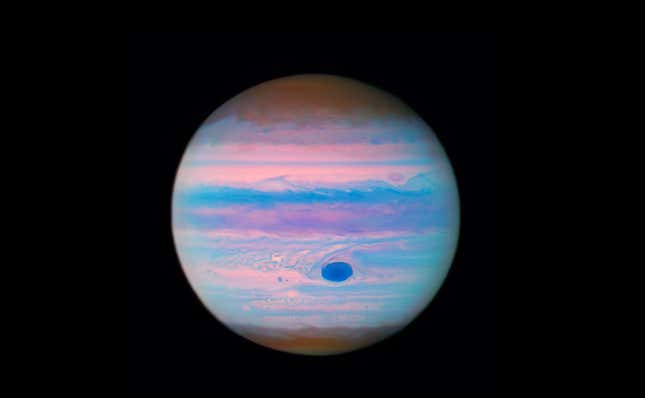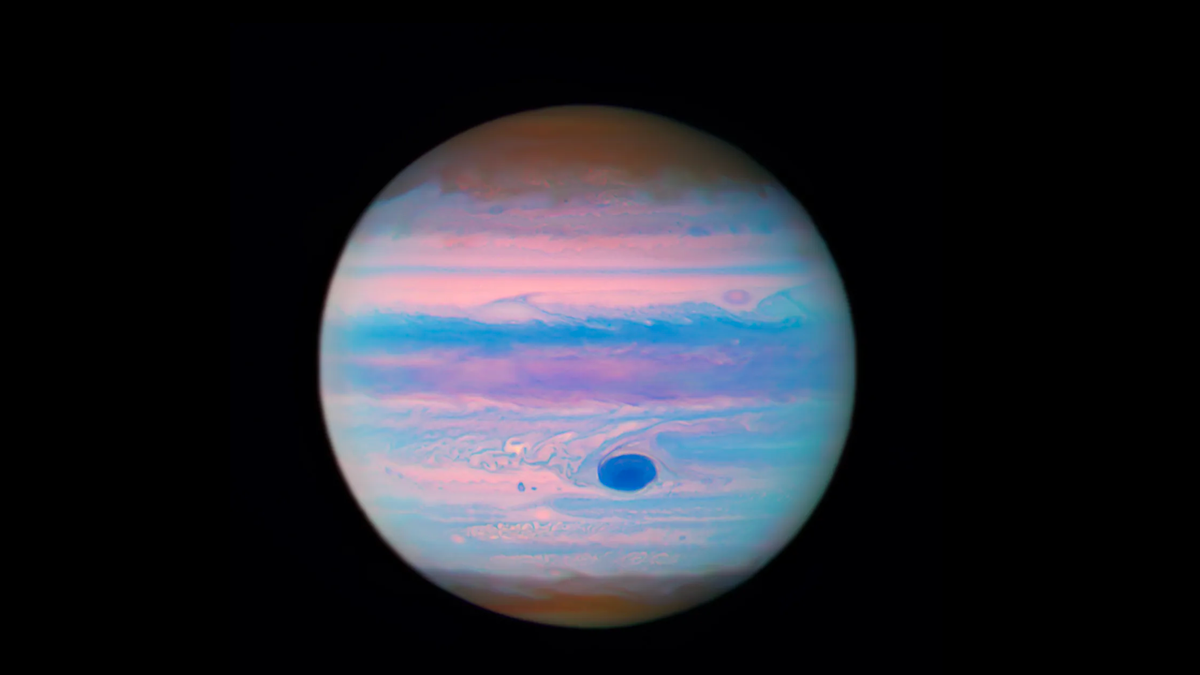
You probably know Jupiter, the rotund fifth planet from the Sun, as orange and tan with a big red splotch. But the Hubble Space Telescope recently imaged the gas giant in ultraviolet light, giving the world a very different look.
At UV wavelengths, Jupiter’s clouds appear in bright pinks, blues, and purple hues. The image is false color, meaning that ultraviolet wavelengths—which the human eye cannot see—were assigned to visual light wavelengths for your viewing pleasure. False color image is a bit of a misnomer, because the images aren’t “fake.” Image processors are just doing the best they can to show you the planet how it could look, in the same way that all the images by the Webb Space Telescope are taken at infrared wavelengths our eyes cannot see.
The planet’s Great Red Spot—a massive storm system in Jupiter’s midriff—appears a deep azure instead of its usual dark red. The spot looks darker because, as explained in a NASA release, haze in the loftier parts of Jupiter’s atmosphere absorb light at ultraviolet wavelengths.
It’s not the first time Jupiter’s gotten a makeover through the eyes of one of NASA’s space observatories. In July 2022, the Webb telescope released its first portraits of the gas giant at infrared wavelengths, in which it appeared bright orange. Those images were taken with Webb’s Near-Infrared Camera, or NIRCam. The following month, Webb images of Jupiter and its luminous auroral regions showed the planet in a bluish-gray light.
The recent image was created from data taken by Hubble to study Jupiter’s superstorms, some particularly intense phenomena on what is already a very turbulent planet. Last month, researchers found a high-speed jet blasting through the Jupiter’s lower stratosphere.
But the ultraviolet image makes Jupiter look serene, like a sunset over calm waters. It puts a particularly surly planet in a new light.
More: Jupiter’s Giant Face Looks Super Unhappy About Something

